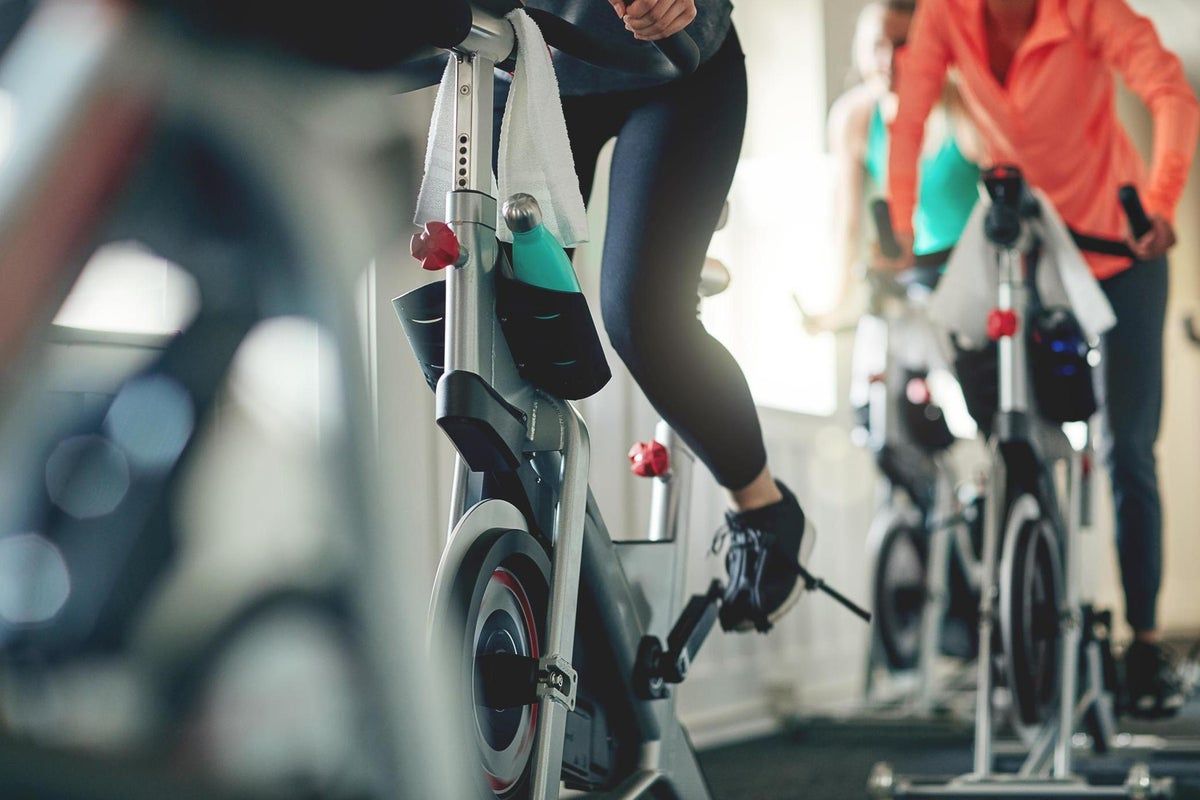Group Spinning weekly classes could be more beneficial and profitable than physiotherapy for people with a common hip problem, suggests new research.
Hip osteoarthritis occurs when cartilage in the hip is broken down, causing pain and stiffness, and it is estimated that it affects approximately 3.2 million people in the United Kingdom.
Experts from the University of Bournemouth and DORSET University Hospitals (UHD) compared standard physiotherapy care with an innovative eight -week exercise and education program known as chain (cycling against hip pain).
Published in Lancet Rheumatology, the study involved 211 participants, divided equally between the two treatment approaches.
The chain group attended weekly education sessions of a physiotherapist, which lasted about 30 minutes, followed by a 30 -minute session of static cycling led by a gym instructor.
The effects of treatment on patients were measured by hip disability and osteoarthritis outcome score (Hoo) score activities of the daily life subscale (ADL), which evaluates how hip problems affect several daily activities.
The study found that those who completed cycling classes had a “statistically significant improvement in the patient informed by the patient after treatment.”
The researchers said the “showed higher results compared to the attention of habitual physiotherapy, and the viability of delivering a low -cost community intervention within the NHS” was demonstrated.
However, they emphasize that “long -term benefits and broader generalization justify greater research.”
Tom Wainwright, a professor of orthopedics at the University of Bournemouth and UHD physiotherapist, said that “the time it takes to treat a patient who uses standard physiotherapy, we can treat several patients in a group session and provide them with better results.”
“This has proven more profitable than standard treatment, so we hope this contributes to reduce NHS waiting times for the treatment of physiotherapy in the future.”
Symptoms of osteoarthritis
NHS
The main symptoms of osteoarthritis are pain and stiffness in the joints, which can make move and do certain activities.
Other symptoms that you or your doctor may notice include:
- joint tenderness
- Increase in pain and rigidity when it has not moved the joints for a while
- The joints that appear slightly larger or more “knots” of the usual
- a sound or crepitant sound or sensation in their joints
- Limited movement range in their joints
- Weakness and muscle wear (loss of muscle volume)
Professor Rob Middleton, from the University of Bournemouth and an orthopedic surgeon at UHD, said: “Hip replacements cost NHS more than £ 6,000 per patient, so avoiding hip problems reduces the load of the NHS, saves money and provides better results for patients.
“Now with this new study, we can also see the potential for static cycling to save more money for NHS by generating waiting lists for physiotherapy.”
Dr. Peter Wilson, medical director of UHD, said: “We are an aging population and more and more we are seeing more patients with osteoarthritis that need surgery or physiotherapy.
“Finding alternative ways of treating these patients could help reduce waiting times and financial demand for NHS services.”
The chain intervention was first launched in 2013 and the patients who wish to participate are referred to UHD of their head doctor.
To reinforce access at the national level, experts from the University of Bournemouth have developed a virtual course in their education application, allowing people to follow the program from their home or local gym.












